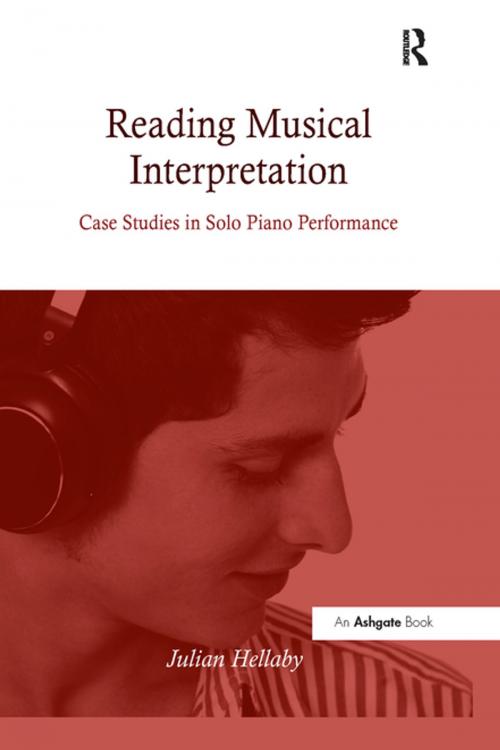Reading Musical Interpretation
Case Studies in Solo Piano Performance
Nonfiction, Entertainment, Music| Author: | Julian Hellaby | ISBN: | 9781351552189 |
| Publisher: | Taylor and Francis | Publication: | July 5, 2017 |
| Imprint: | Routledge | Language: | English |
| Author: | Julian Hellaby |
| ISBN: | 9781351552189 |
| Publisher: | Taylor and Francis |
| Publication: | July 5, 2017 |
| Imprint: | Routledge |
| Language: | English |
Performance studies in the Western art music tradition have often been dominated by the relationship of theoretical score-analysis to performance, although some recent trends have aimed at dislodging the primacy of the score in favour of assessing performance on its own terms. In this book Julian Hellaby further develops these trends by placing performance firmly at the heart of his investigations and presents a structured approach to analysing the interpretation of a musical work from the perspective of a musically informed listener. To enable analysis of individual interpretations, the author develops a conceptual framework in which a series of performance-related categories is arranged hierarchically into an 'interpretative tower'. Using this framework to analyse the acoustic evidence of a recording, interpretative elements are identified and used to assess the relationship between a performance and a work. The viability of the interpretative tower is tested in three major case studies. Contrasting recorded performances of solo keyboard works by Bach, Messiaen and Brahms are the focus of these studies, and analysis of the performances, using the tower model, uncovers an interpretative rationale. The book is wide-ranging in scope and holistic in approach, offering a means of enhancing a listener's appreciation of an interpretation. It is richly illustrated with examples taken from commercial recordings and from the author's own recordings of the three focal works. A CD of the latter is included.
Performance studies in the Western art music tradition have often been dominated by the relationship of theoretical score-analysis to performance, although some recent trends have aimed at dislodging the primacy of the score in favour of assessing performance on its own terms. In this book Julian Hellaby further develops these trends by placing performance firmly at the heart of his investigations and presents a structured approach to analysing the interpretation of a musical work from the perspective of a musically informed listener. To enable analysis of individual interpretations, the author develops a conceptual framework in which a series of performance-related categories is arranged hierarchically into an 'interpretative tower'. Using this framework to analyse the acoustic evidence of a recording, interpretative elements are identified and used to assess the relationship between a performance and a work. The viability of the interpretative tower is tested in three major case studies. Contrasting recorded performances of solo keyboard works by Bach, Messiaen and Brahms are the focus of these studies, and analysis of the performances, using the tower model, uncovers an interpretative rationale. The book is wide-ranging in scope and holistic in approach, offering a means of enhancing a listener's appreciation of an interpretation. It is richly illustrated with examples taken from commercial recordings and from the author's own recordings of the three focal works. A CD of the latter is included.















